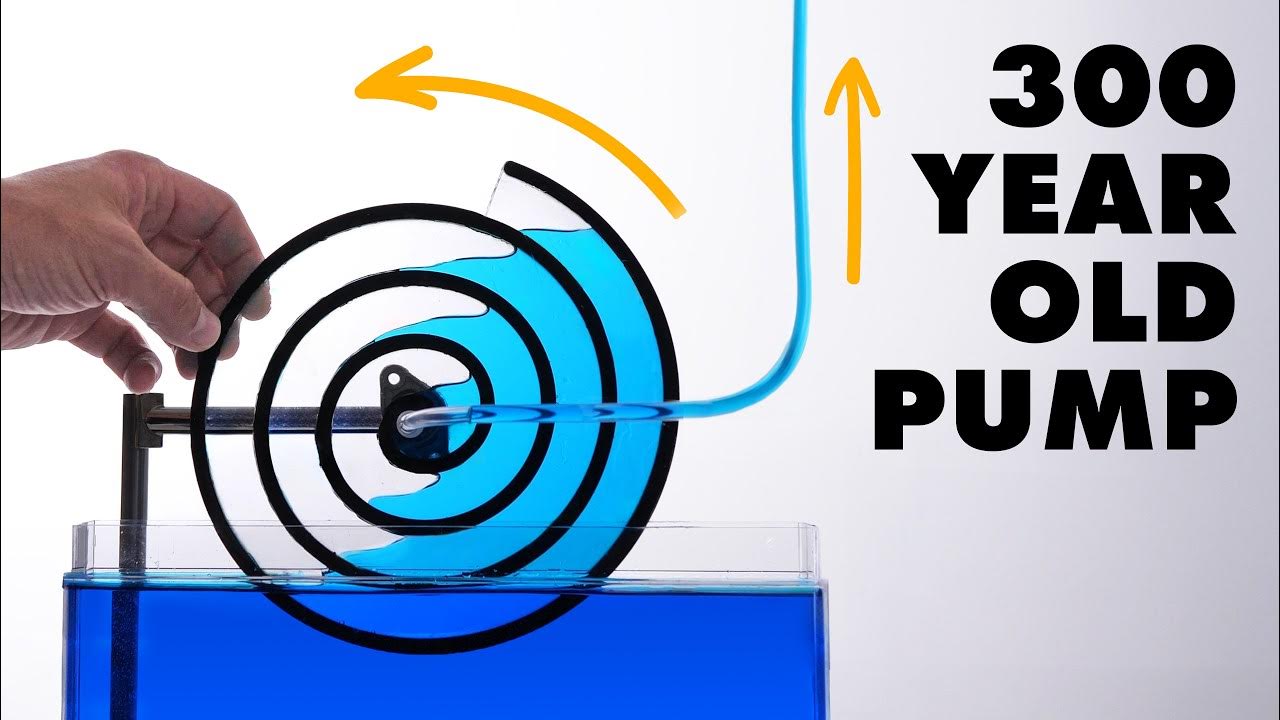Ramps are so amazing. Thanks for existing, ramps. You make so many things possible.
Yeah, but what about levers?
Goddamn dude are you tryna get married or what? talking dirty af to a motherfucker right now. I like your roll.
Alternative reply:
I’m inclined to get sprung if you wheely keep pulleying my strings.
This was unexpected and hilarious… :)
Pulleys 🤤
Took one look at that thumbnail and knew it was a Steve Mould creation. He has a very distinctive style to his water models.
Blue water and acrylic side panels?
Here is an alternative Piped link(s):
https://piped.video/watch?v=wCxRHueX6jQ
Piped is a privacy-respecting open-source alternative frontend to YouTube.
I’m open-source; check me out at GitHub.
Actually just watched this before I saw this post. Great video and very informative!
Matt Parker looks so insanely different with that beard.
Steve Mould is a great YouTuber. Up there with Technology Connections
Isn’t this a scroll pump?
No, beyond both being spiral shaped they have basically nothing to do with each other
Also: I don’t know why they’re making them as strict spirals. It looks to me like anything that’s just a coiled hose with a large coil radius will work just as well, and you don’t have to carefully construct this strictly flattened shape for your machinery.
deleted by creator
deleted by creator
So, basically an Archimedes Screw.
Nope. The airlock effect inside the mechanism produces an additive effect with each coil that builds the pressure way beyond what a normal screw pump is capable of (he shows a friend who has one that pumps water to a garden 8 meters above just from the force of the river spinning it). That’s what makes it worth its own whole Steve Mould video.
Thankyou for making me watch the video. I wish I knew the math behind this.
My high school math teacher would be shocked to know I have written such a sentence. It’s a pity educational tech wasn’t better back then.
Yeah it’s super dope.
One way to think of it non-mathematically is like this: Water and air behave differently in this system in how they transport pressure. Water in a hose creates a certain pressure on what’s below it, where you can think of the pressure as measured by the depth of the water. So the weight of 8 vertical inches of water will create 8 inches worth of pressure on whatever’s below it. Air, however, will “teleport” the pressure it’s experiencing from one end to the other end, up or down, without contributing anything significant from its own weight.
So in the outside loop of the hose, on the right side if you’re looking at the video thumbnail, you might have a little 8-inch column of water, which can’t go down any further because there’s air in the way. So it’s exerting 8 inches worth of pressure down on that air. Then the air takes that pressure and “teleports” it to the top of the next coil inwards, so that if there’s 8 more inches of water in the next coil, it’s exerting 16 inches worth of pressure on what’s below it, from the air plus the weight of that much more water. Then the air below it teleports 16 inches of pressure over to the next coil in, and so on for every coil, until the inner coils have as much pressure as they would from a ton of water sitting on top of them, way more than the actual total vertical size of the system.
Thanks for such a detailed response, but I confess I do already understand the principle! I was actually just idly wondering what the delta on air+water pressure vs water or air only would be and how to calculate what diameters/speeds would be necessary to achieve certain heights/output.
I may have been tempted to build a mini version for the completely unnecessary reason of automating my plant watering with a spare tiny 3V solar panel that may no longer even work and some other trash. Just ADHD things.
I just like explaining stuff, that is my ADHD
It sounds like you’re basically getting “free height” from the air pockets, so it would take the same energy to raise a solid stream of water 10ft as raising a 50:50 air:water split 20ft, because they have the same weight. Am I understanding that right?
Yeah, absolutely. It’s not the only thing that’s going on but that also happens.
So for example how they’d combine is, you could have 10 coils with a one-foot column of water in each, and that gives you 10 feet of pressure at the output pipe. That’s way more than you would expect from the whole system being just one foot high (or a little more in practice) and self-powered. But then also, because it pumps a mixture of water and air into the pipe, it can reach a destination 20 feet up, by using that 10 feet worth of pressure (because as you say it’s only lifting 10 feet worth of water and the weight of the 10 other feet of air is negligible).
Neat. I’ll check out the video when I get the chance.
Yes, but flattened
You say flattened, I say dimensionally simplified. We are not the same jk








